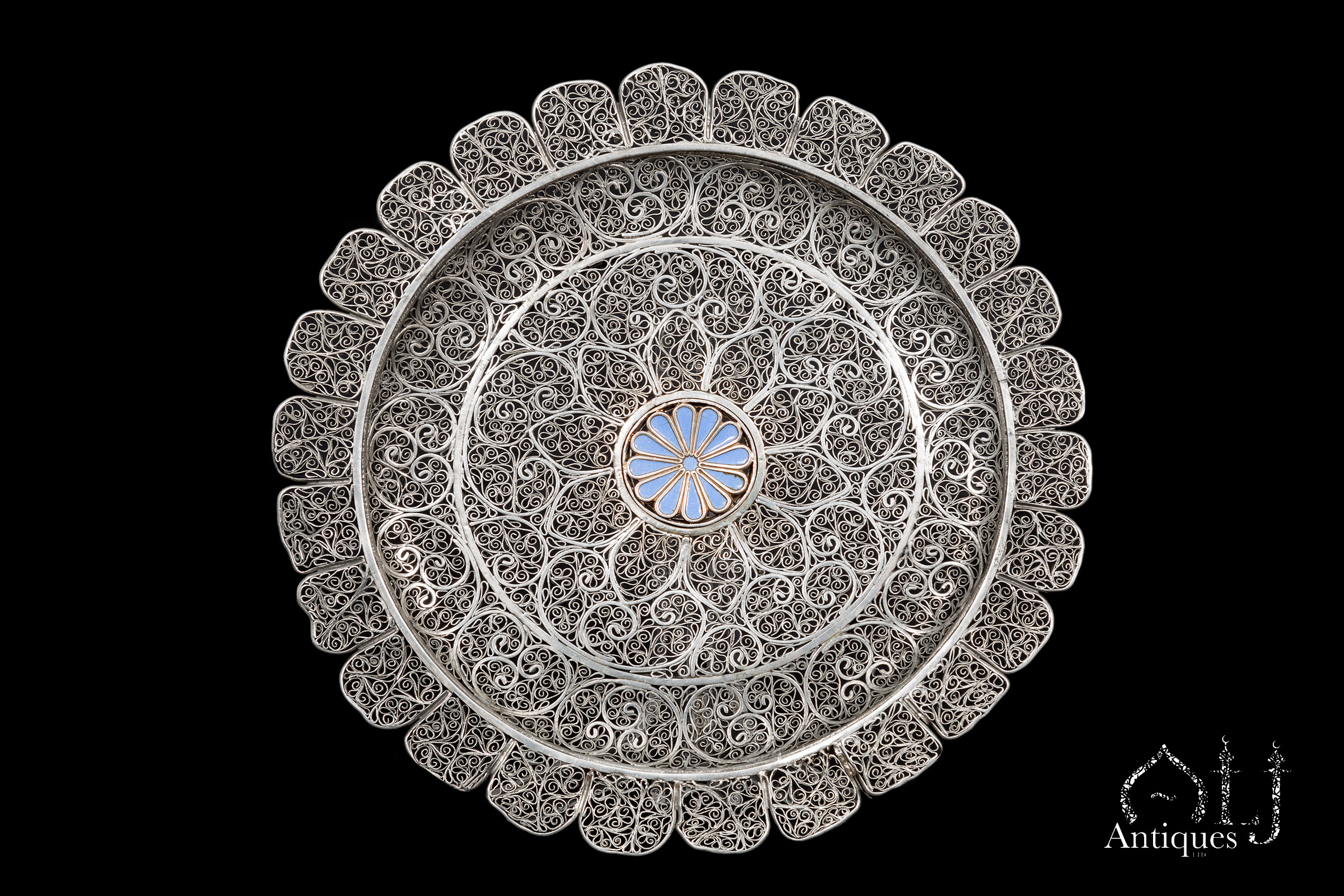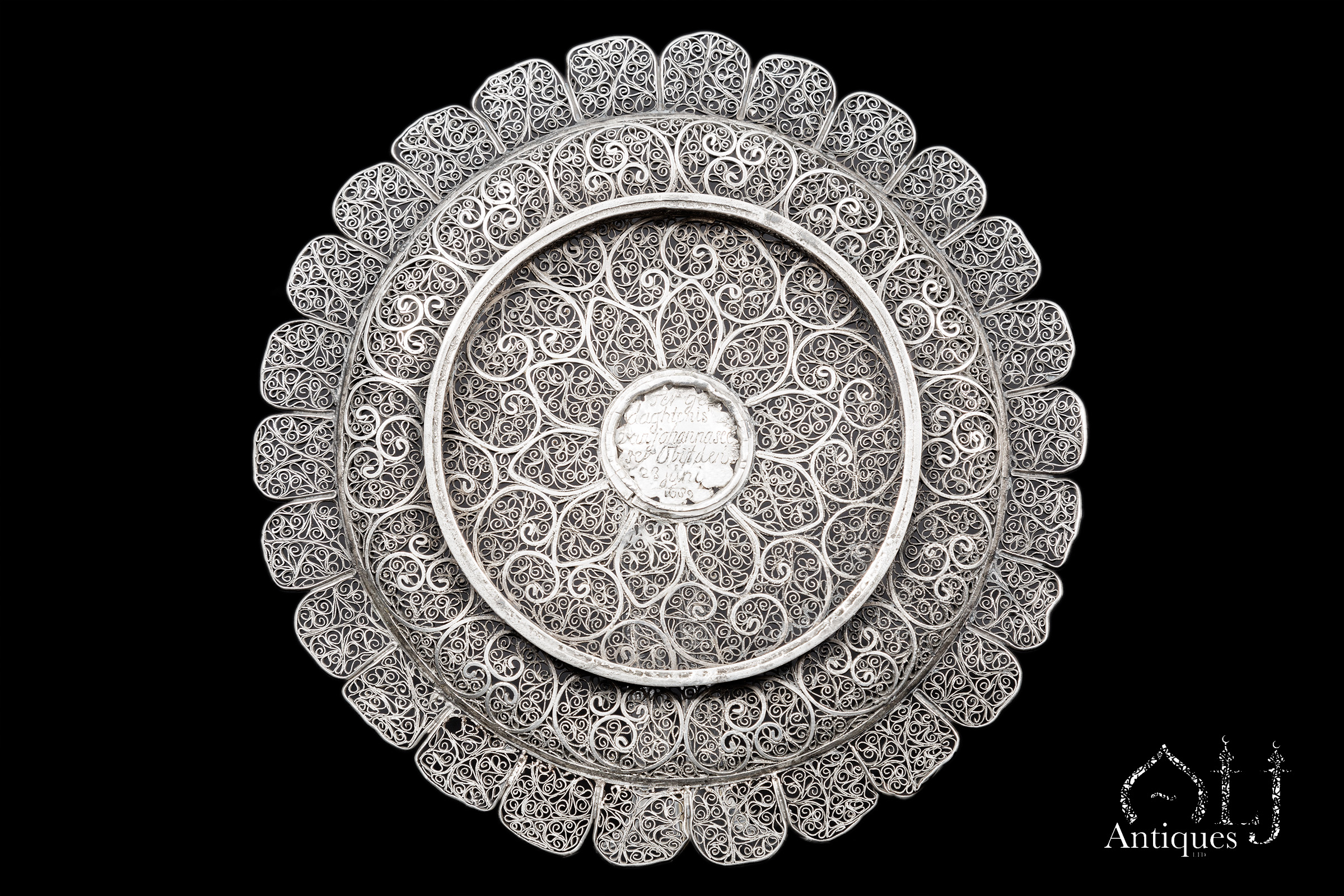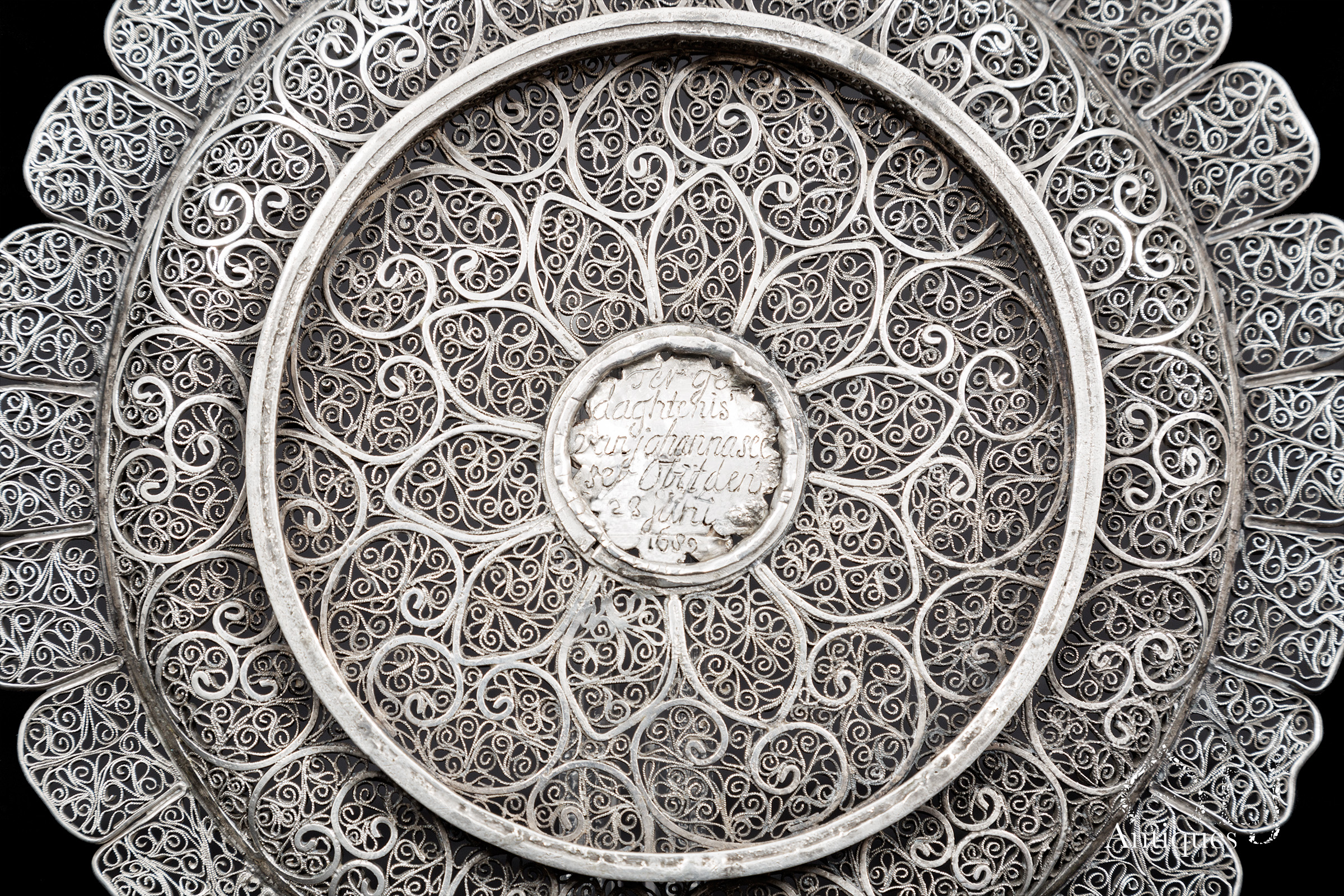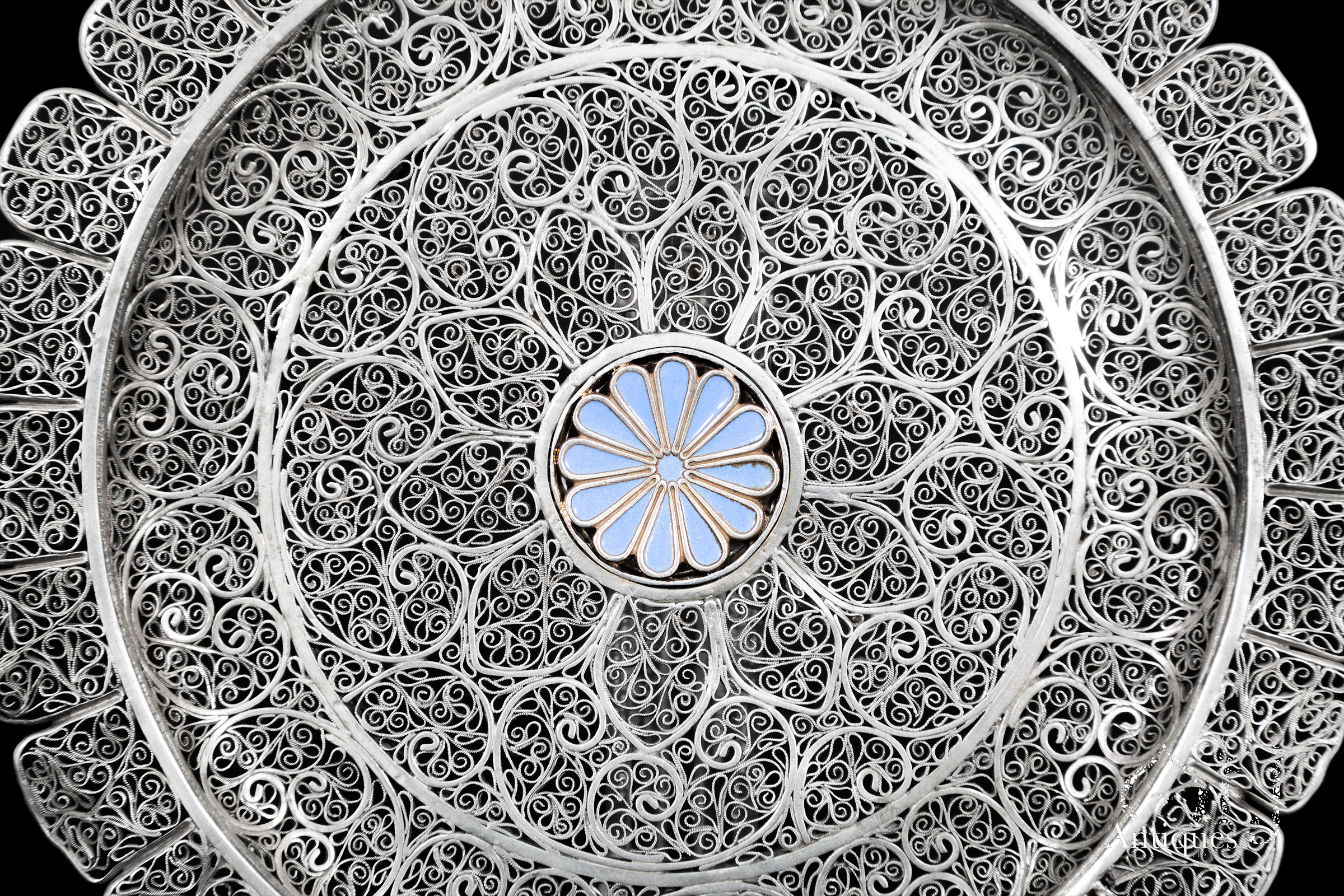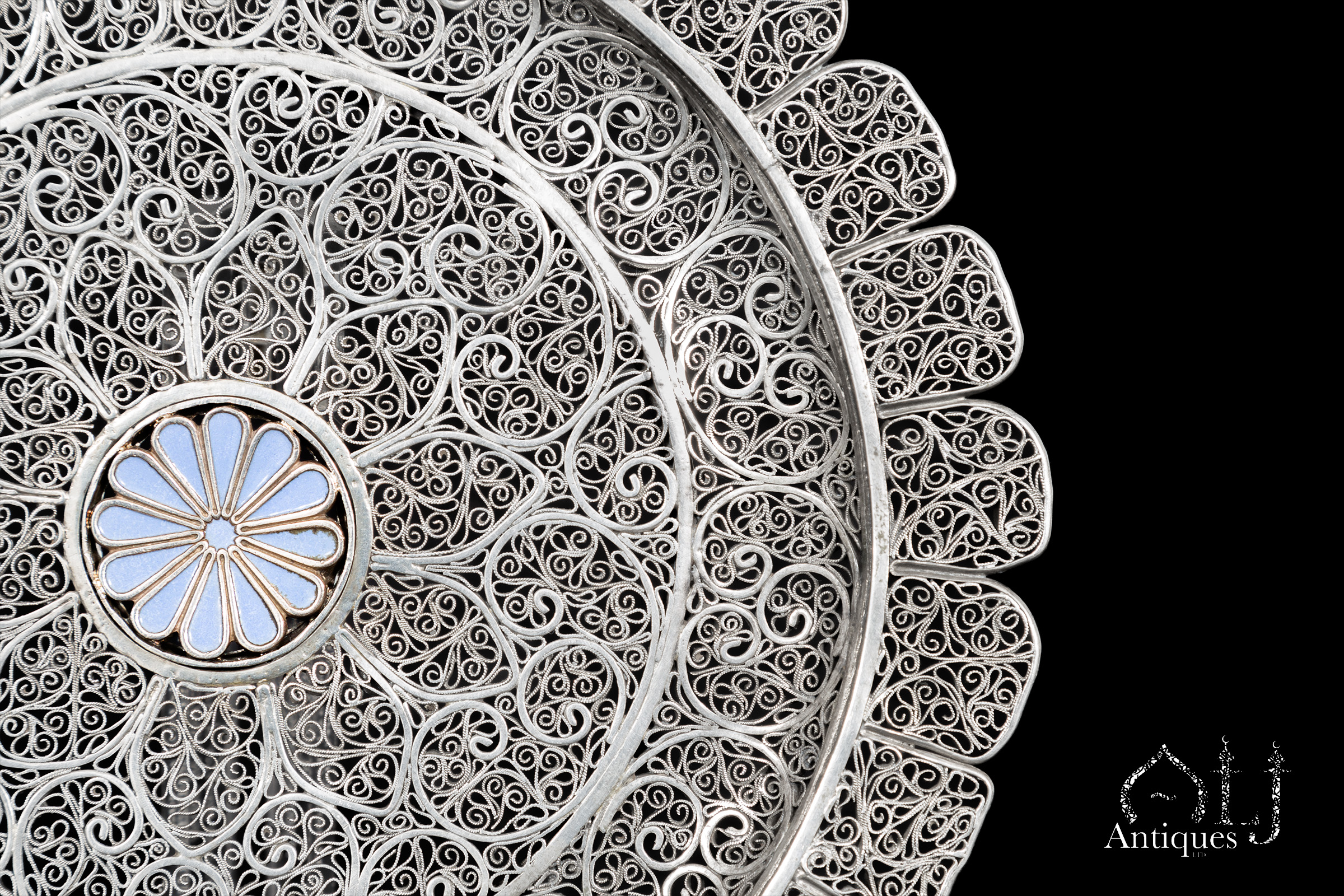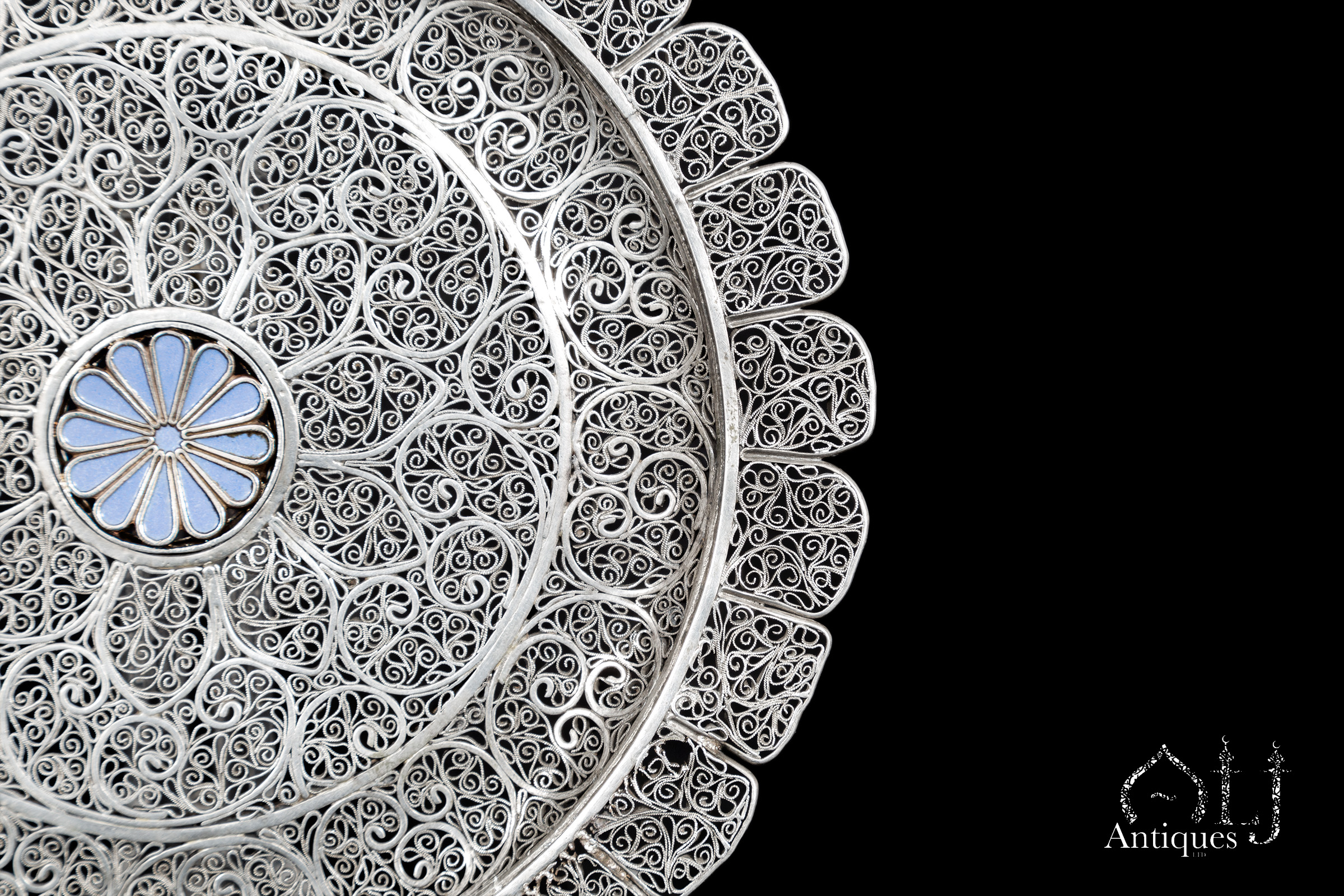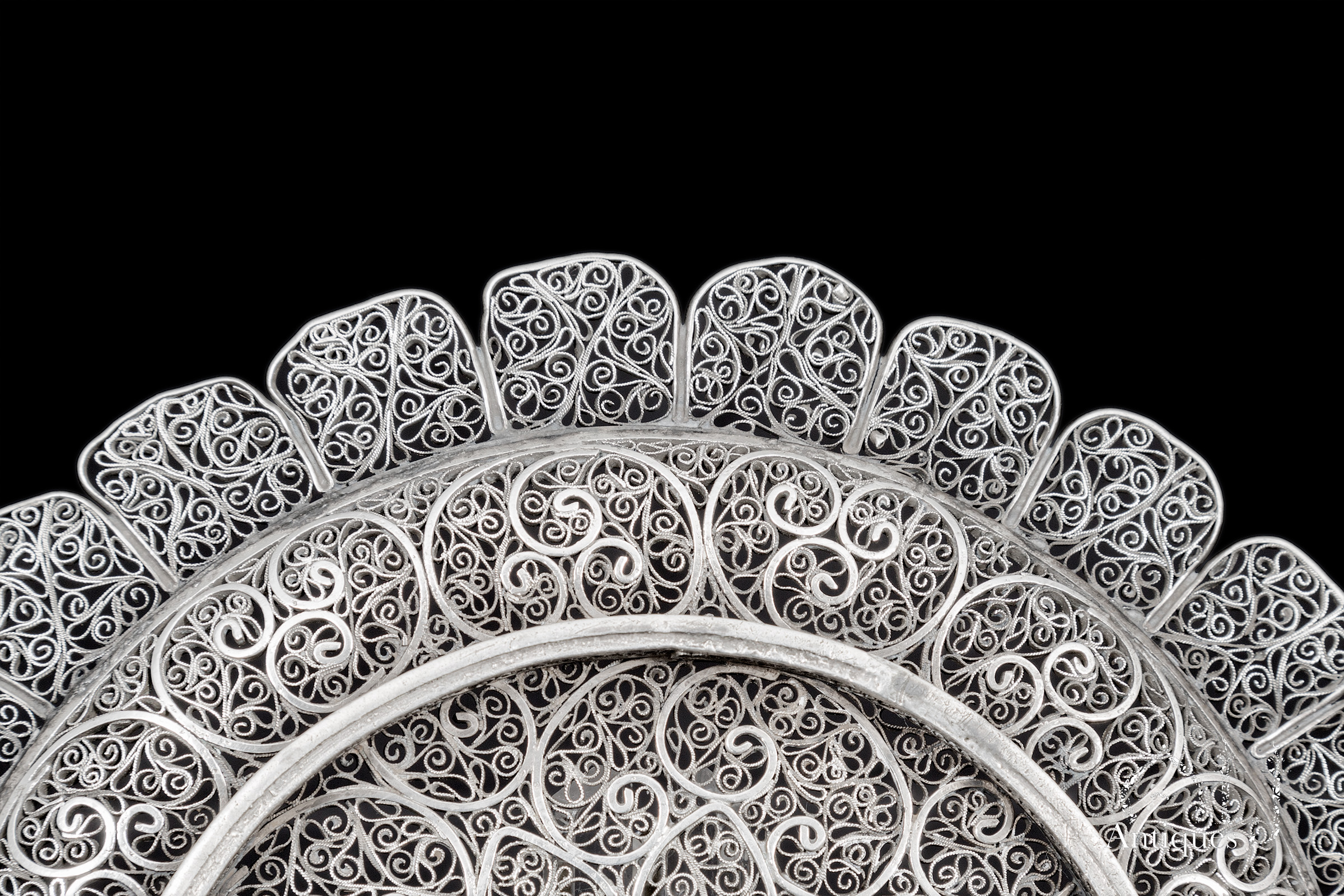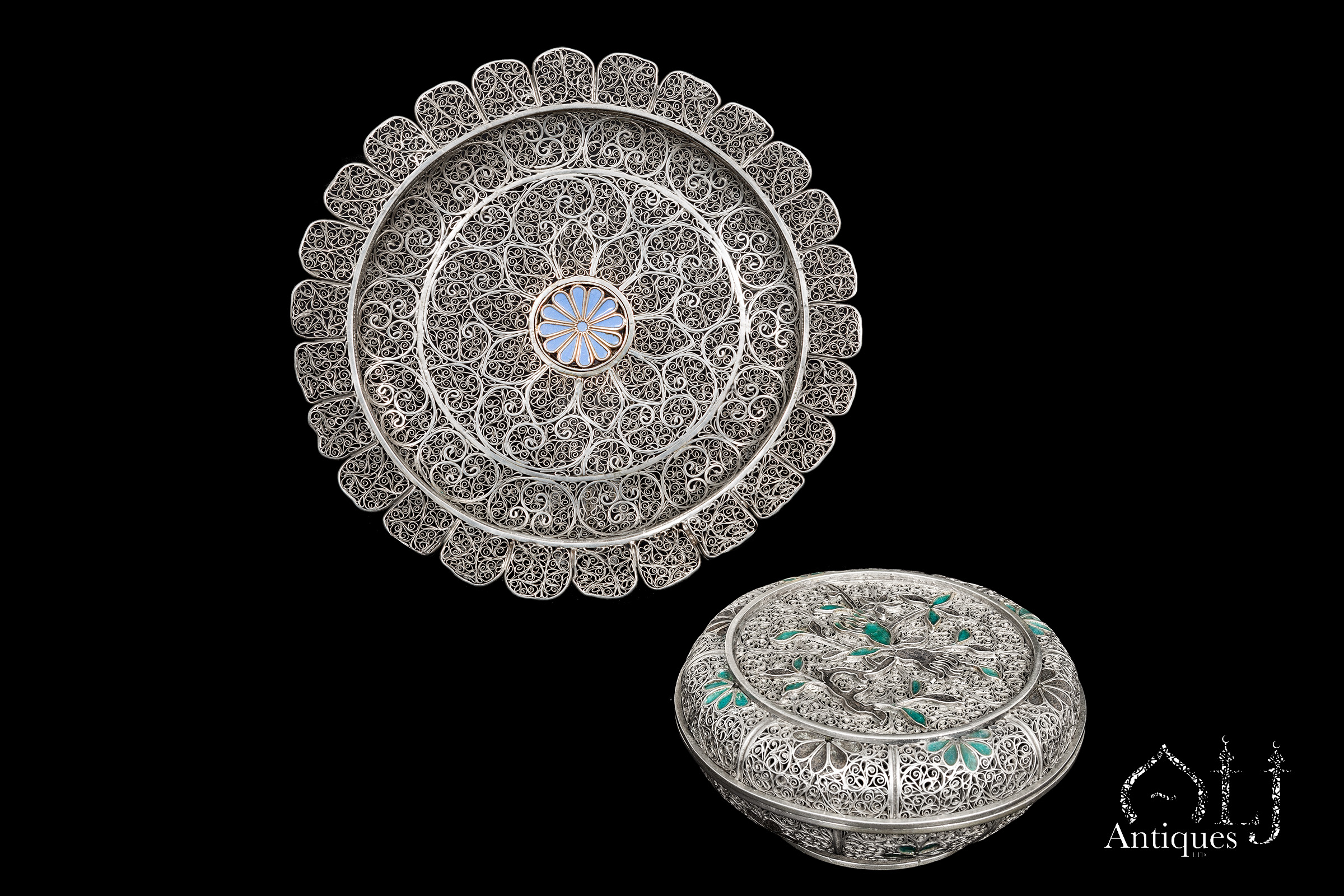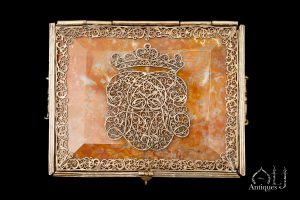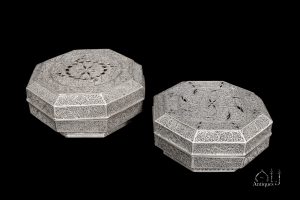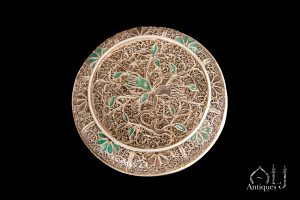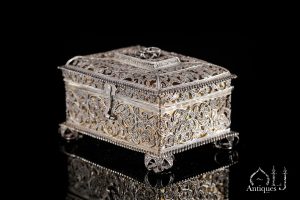Description
Dutch Colonial Silver, An Exceptionally Rare Decorative Round Enamelled Filigree Silver Offering Dish The central Part is Decorated With Blue Lazurite Enamelled Silver Decoration.
The piece was probably been made or commissioned as a funeral favor or memento or was granted as a sympathy gift to celebrate the short life of a much loved young lady who had her life cut short by her death.
Sympathy items were usually made in memory of the passing away of a loved one and it was potentially presented or been sent as a condolence gift to the mourning family.
The potential history behind this souvenir piece is immense; this is due to the engraved details engraved at the back of the piece, which bears very important historical information.
Potentially after the lady’s death (Ms. Johanna Van Seventer) who had died in the year 1686 AD., and is been been buried at the holly grounds near the water canals of the famous Nieuwe Zijds Chapel in the City of Amsterdam.
Possibly and in order to make a special sympathy memento after the lady’s death, the idea was to make an Art piece of remembrance to mourn the young lady’s death, then it was decided an art piece to be made and commissioned from Indonesia, therefore probably a little inscribed memo was written on a piece of paper and then was sent from Amsterdam where the lady and her family had lived to Indonesia.
And due to the fact that the engraved memo which was engraved afterwards at the back of a silver blossoming lotus flower shaped disk fitted and soldered at the central round part of the filigree dish, the engraved calligraphy was executed in a rather primitive and poorly manner also the inscription bears some engraved linguistic mistakes, all of which might suggesting that the inscribed memo may well had been engraved and copied by a Chinese silversmith working either in Batavia (nowadays Jakarta-the Capital of Indonesia), or was engraved in Padang-West Sumatra.
For and then probably the Chinese engraver had no knowledge or command of the Dutch language and probably he or she was only copping the memo which was hand written on a piece of paper into the soldered silver disk at the back of the dish, behind the enamelled silver blossoming lotus flower shaped medallion at the front of the filigree silver plate.
The dish is been made in a circular form and is been decorated by using both types of ribbed thick wires in a square geometric shape and another smaller serrated type of filigree silver wires, both types of wires were weaved with intense interlaced curved vegetation, the central filigree design surrounding the enamelled piece at the centre is also been decorated as a larger blossoming lotus flower top as if the enamelled flower at the centre is been fitted on top a larger flower also the borders of the dish is been designed in the form of wreath or flower petal decorations potentially even a larger lutes flower top.
Perhaps when thinking of making the design of this floral based model which was made to fit the sad memory and the continued grieving of the death of a much loved person was originally the idea of the Chinese artists or silversmith who had made the dish in the first place for the existence of the lotus flower is usually derived from Buddhism, this is quite evident from the repeated existence use of the lotus flower in the intricate design of the dish which it was probably been taken from after another Chinese example and was probably made in Padang west Sumatra and it was probably sent to be enameled in the city of Batavia where the enamelling centres used to be.
In comparison with our lot, please notice the similarities of the eight Blue Lazurite enamelled silver petals found around the lower container of the following Batavian enamelled filigree box.
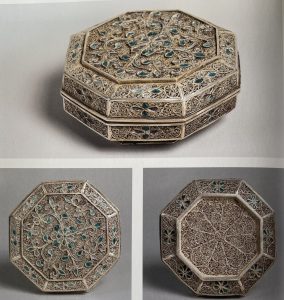
Please also see the open work decoration used in the silver filigree caskets in lots 189, 193 & 194, exhibited on pages 122 & 125 and the filigree beaker, lot No. 200 illustrated on page 128.
Please notice the identical open work floral depiction executed on the lid of lot 194.
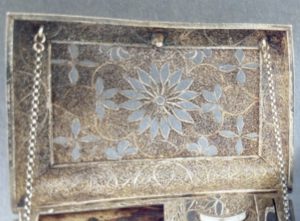
Special Thanks, to the valuable research conducted and the time spent on the piece which was originally made by two sincere and kind friends Mr. R. & Mr. R. who both have great passion on history and research also to the kind and hard work and the generous research which was conducted by a kind researcher who had worked at BOTH Amsterdam City Archives & A Valuable member at the Heritage Department at the Dutch City of s-Hertogenbosch, all of which wishes to stay anonymous.
The Engraved Inscription Reads as Follows
Ter ge-daghtenis Van Johanna see-(ve)ter Obijt den 23 juin 1682
Ve (potentially is been missed by the Chinese engraver)
Translating to:
In Remembrance of Johanna Van Seventer ‘Obijt’! 23 rd. of June 1682.
In Latin Obijt refers to a male or female human being who had died.
The Following is a brief Case Study and Findings on What Potentially Could be one of the Earliest Dated Examples of Dutch Colonial Partially Enamelled Filigree Silver Pieces Ever Found.
In regards to the date of 1686 AD., which is engraved on the piece, There are two main hypotheses.
(The First hypothesis)
The Date Engraved on the Item is the Actual date of the making of the item.
As discussed earlier, the item was commissioned and made in Indonesia straight after the death of the young unmarried lady.
(The Second hypothesis)
The Date and the connection with the VOC (Verenigde Oostindische Compagnie, translating to The Dutch East India Company), which was originally founded in 1602 AD. Between both Amsterdam and Batavia.
The item was made at the beginning of the 18th. Century, during the period when Johanna’s father (Willlem Van Seventer) went and worked as an official soldier and clerk at the VOC in Batavia between the periods of (9th. of January 1715, to the 14th. of June 1737 AD.).
Whatever the fact is, in our humble opinion and to the best of our knowledge, this important piece is the only dated piece, which belongs to other few related but undated examples from around the same period found at various Dutch Museums, which is believed to have been made around the year 1700 AD.

